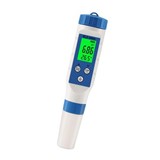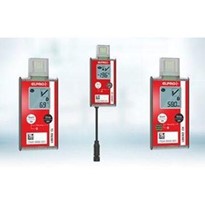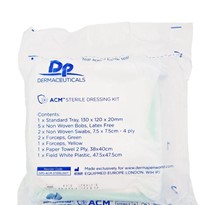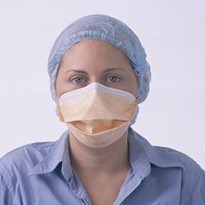Nowadays, everyone is attempting to save, reduce, and cut back — except when regulatory requirements are involved. Such requirements are becoming more comprehensive and more challenging, especially when it comes to the quality of pharmaceutical products. Over the course of the last 100 years, good manufacturing practice has resulted in substantial requirements for drug product safety. These GMP guidelines didn’t appear out of thin air, and they haven’t been developed by the authorities over a short period of time. Rather, they involve experiences — some of which have involved serious events – over time. The following article is intended to raise awareness of the need to focus on GMP and to reach a broad audience across all corporate levels.
Quality — The Most Important Consideration
Throughout life, people suffer from a variety of ailments that take different courses and have various manifestations. In most cases, people decide on their own or on the advice of their doctor, to take medication to ease the symptoms and treat their illness. This raises the question of whether the medication used to treat the illness is effective and whether the person using it will be able to tolerate it. Furthermore, as a result of headlines in the news, we are now highly aware of the issue of drug safety
Effectiveness, tolerance, and safety are very much determined by the quality of the drug product. Quality, in turn, depends on the production of the active ingredients and accompanying substances that are used, the combination and assembly of these substances, packaging, storage and transportation, the experience and training of all participants, the validation of procedures, the qualification of systems, and the service providers and consultants involved in the process. As a result, there are numerous actors and potential sources of errors that have a direct impact on quality. These considerations are especially important with respect to vaccines. Because vaccines are produced using biological and genetic engineering processes, steps must be taken to prevent contamination. The processes used to ensure quality of medicines and vaccines must be flawless, nothing left to chance. Patients assume all parties involved — manufacturers, labs, packagers, warehouse workers, transporters, and pharmacists — meet all quality requirements at all times and trust the medicine is safe. Is trust enough when it comes to your health? Probably not. This is where regulations come in. They are precise requirements that must be observed with respect to the production, storage, transportation, testing, and sale of drug products. These are the rules of GMP. As global standards, they are defined in national laws around the world. In Germany, they are outlined in the Medicinal Products Act (AMG).
If Everyone Acted Responsibly The women and men who work in the pharmaceutical industry have a wide variety of training levels and specializations, from sales staff to engineers, from lab assistants to cleaning specialists. The regulatory framework, laws, guidelines, and regulations around the world are so complex, their impact can be felt beyond the production sites and labs. They can also affect all corporate levels. Therefore, all employees must understand the aim and purpose of their role, their work, and how GMP regulations affect their work. A willingness to assume responsibility in this regard is essential to ensure the health risk to patients and the associated economic risks to the company have been minimized as much as possible. Ultimately, a company will realize that there is a break-even point for the additional work that is required by GMP. Net gain will come from your company’s compliance. History shows that patients have suffered serious negative health consequences – and in some cases even death – as a result of errors in the production process or as a result of errors during the analysis stage. In many instances, these errors could have been avoided if GMP requirements had been applied at the time.
GMP — What Is It? Drug products are developed and produced in order to prevent or cure illnesses or to provide ill patients with relief. Drug products are purchased with the trust and the confidence that the manufacturers do everything they can during the production and development process to ensure high quality and prevent risks during the process. The awareness that drug products can lead to substantial risks arose, in part, in the early 1960s as a result of the Contergan scandal, when deformations and deaths occurred among infants after their mothers had taken sleeping aids while they were pregnant. At nearly the same time, millions of people accidentally became infected with the SV40 simian virus when they were immunized against polio because the oral vaccine was contaminated. SV40 can cause cancer. For example, SV40 viruses cause lymphomas, lung cancer, bone cancer, and brain tumors in hamsters. This shows that there are significant risks associated with medication that have not been tested sufficiently, that have become contaminated or otherwise tainted, or that have been the subject of an act of sabotage. To prevent such risks, standards to ensure a uniform quality assurance (QA) system must be developed and updated on a continuous basis. However, GMP itself is not a QA system, but instead only provides specific instructions for production processes and for controlling the products that are manufactured. GMP must be integrated in an existing, functional quality management system (QMS). In Germany, compliance with GMP is mandated by law in Section 54 of the AMG. The underlying framework are the EU GMP guidelines, which since 2006 have consisted of two large sections and the related annexes. The actual authorization to manufacture, distribute, or test drug products is provided by the manufacturing authorization pursuant to the AMG. In Germany, such authorization is granted by various authorities, including district governments, regional councils, and other state authorities
In the US, the Food and Drug Administration (FDA) is the sole agency responsible for food and drug products. Title 21 of the Code of Federal Regulations (CFR) Part 211 outlines the GMP requirements for finished pharmaceutical products. The GMP guidelines, which were originally published by the World Health Organization (WHO) in 1968, have been updated continuously since the 1980s. Based on these guidelines, there is an obligation for both manufacturers and product analysts to define, prior to the introduction of a drug product on the market, a mandatory, multistage approval process. This obligation was first defined in the US. The first US law related to drug products was the Pure Food and Drug Act of 1906, which required that drug products be clearly labeled; however, this law did not introduce an approval process. This occurred three decades later with the Federal Food, Drug, and Cosmetic Act of 1938, which was passed as a result of the sulfanilamide disaster, in which more than 100 people died after taking an antibiotic that had not been tested sufficiently. The key provisions of this law were strengthened by the Kefauver Harris Drug Amendment of 1962, which was passed at the same time as the revelation of the Contergan scandal. This amendment required, for the first time, proof of a drug’s therapeutic effectiveness and safety as shown in adequate and well-controlled clinical studies. A number of drug laws in other countries subsequently also required proof of a drug’s effectiveness. In many respects, US drug laws since 1962 have served as a model used by a large number of other countries. Internationally, guidelines regarding how and under what conditions drug products may be developed and manufactured have been formulated and enshrined in law in order to ensure and continuously improve product quality. Taken together, all of these guidelines and laws are called GMP. Strict implementation of, compliance with, and adherence to GMP is the most important duty of pharmaceutical companies and testing labs during their day-to-day activities. In Germany, companies have only been allowed to produce approved drug products if they have demonstrated that they are suitable manufacturers by receiving official authorization since the introduction of the AMG in 1976. On the basis of official inspections, such suitability is carefully reviewed by representatives of the state (inspectors) and, if the manufacturer is deemed to be suitable, documented in a manufacturing authorization in accordance with Section 13 of the AMG. After the initial inspection, the official representatives conduct additional checks at regular intervals (in Germany, every two to three years, using a risk-based approach). The details are set out in the General Administrative Regulations for the Implementation of the AMG (Allgemeine Verwaltungsvorschrift zur Durchführung des Arzneimittelgesetzes – AMGVwV).
How is GMP to be implemented?
Although there are numerous laws, guidelines, and regulations that address the topic of GMP, the level of detail that has been defined with respect to their actual implementation is usually insufficient. As a result, each individual company must generally decide for itself how to ensure a certified GMP environment. We will look more closely at this question of how to implement GMP in the next section. GMP Is Everyone’s Business — Not Just Production As a result of advances in research, the requirements imposed on the manufacturers of pharmaceutical products are becoming increasingly complex and more time-consuming. At the same time, however, the requirements for management structures from a regulatory perspective are also increasing, as it is now necessary for companies to have at least one quality assurance manager (though they generally must have an entire quality assurance department). This department is responsible for implementing and monitoring tasks within their area of activities related to compliance with quality standards, and its members are appointed directly by management. The era when the rules of GMP were applied solely to production is over. “Everyone involved in the long value chain of a medication are now affected by GMP and must adhere to the corresponding requirements. In addition to the manufacturer, this also includes retailers, service providers, service technicians, software suppliers, and even garbage disposal companies.” The overarching goal of quality assurance is to establish a system within each company that ensures implementation of the applicable national and international rules, ordinances, and laws, including GMP. The department must, therefore, ensure seamless and complete proof of the existence of the necessary QA system. Milestones in the Development of GMP As indicated above, GMP has changed over the course of the last century. These changes were mainly due to events that can still be found in the media today and that are discussed regularly at GMP conferences, training sessions, and meetings in order to raise awareness of the need for GMP.





























